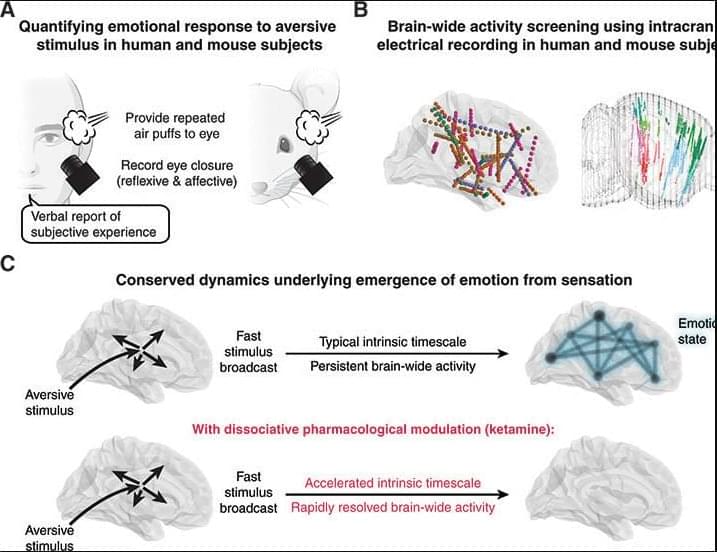A type of hydrogen that doesn’t interact with light could explain how long neutrons live and reveal the identity of the universe’s dark matter, according to a new theory.
A study published in Astronomy & Astrophysics has identified four previously unknown primordial open cluster (OC) groups in the Milky Way.
Open clusters, loose assemblies of stars born from the same giant molecular cloud (GMC), are typically considered to form in isolation. However, the newly discovered OC groups consist of multiple member clusters originating from the same GMC, formed through sequential star formation processes.
Notably, two of these groups, labeled G1 and G2, appear to have formed via a hierarchical mechanism triggered by multiple supernova (SN) explosions.
Emotional responses to sensory experience are central to the human condition in health and disease. We hypothesized that principles governing the emergence of emotion from sensation might be discoverable through their conservation across the mammalian lineage. We therefore designed a cross-species neural activity screen, applicable to humans and mice, combining precise affective behavioral measurements, clinical medication administration, and brain-wide intracranial electrophysiology. This screen revealed conserved biphasic dynamics in which emotionally salient sensory signals are swiftly broadcast throughout the brain and followed by a characteristic persistent activity pattern. Medication-based interventions that selectively blocked persistent dynamics while preserving fast broadcast selectively inhibited emotional responses in humans and mice.
Circulate Health and Buck researchers find that TPE combined with immunoglobulin reduced biological age by more than 2.5 years on average.
Mathematicians have started to prepare for a profound shift in what it means to do mathematics.
Researchers engineered a quantum material with superconducting and topological traits, opening the door to ultra-efficient electronics.
Erwin Schrödinger’s famous thought experiment has always been deeply misunderstood. In this article I’d like to explain how, if understood properly, it might shed new light on the mechanism by which consciousness evolved.
Schrödinger’s cat and schrödinger’s hat
The purpose of Schrödinger’s thought experiment was to highlight serious problems in the (then very new) “Copenhagen Interpretation” of Quantum Mechanics (CI). The CI was a bit of a botch-job, because the founders of QM had no idea how to “interpret” the strange new physics they had discovered. The CI says quantum systems remain in a superposition (a “smeared out” state where everything than can happen is somehow happening in parallel) until measured, but does not define what counts as a “measurement”, or why. Schrödinger always rejected this idea, and his thought experiment was intended to demonstrate why. He proposes a sealed box (so no “measurements” can take place), in which has been placed a cat, and a quantum source with a 50% probability of releasing poison. According to the CI, so long as the system inside the box remains “unmeasured”, the poison has both been released and not-released and therefore that cat is both dead and alive.
Anthropic, founded in 2021 by a team that departed OpenAI over differences in vision, closed a $3.5 billion fundraise earlier this year. That valued the company at $61.4 billion.
Whether you are lucky enough to have a cat companion or must merely live this experience vicariously through cat videos, Felis catus is a familiar and comforting presence in our daily lives. Unlike most other feline species, cats exhibit sociality, can live in groups, and communicate both with other cats and humans, which is why they have been humans’ trusted accomplices for millennia.
Despite this intimacy, there is still much that we don’t know about our feline friends. Numerous behavioral studies have been conducted on other mammal species, but relatively few on cats.
In part to fill this gap, a team of researchers at the Wildlife Research Center of Kyoto University are investigating the genetic background of cats’ behavioral traits. Specifically, they aim to understand the association between traits like purring and variation in the androgen receptor gene. Though the exact function of purring remains unclear, previous studies have indicated that it is beneficial for feline communication and survival.









